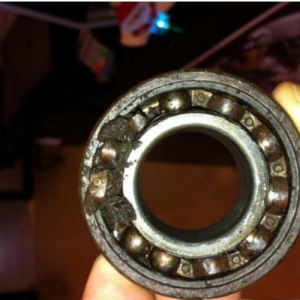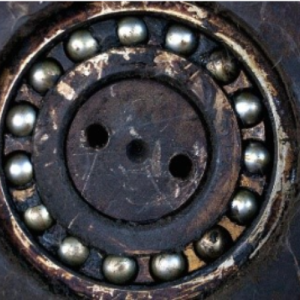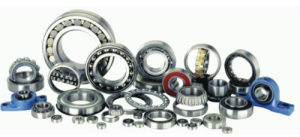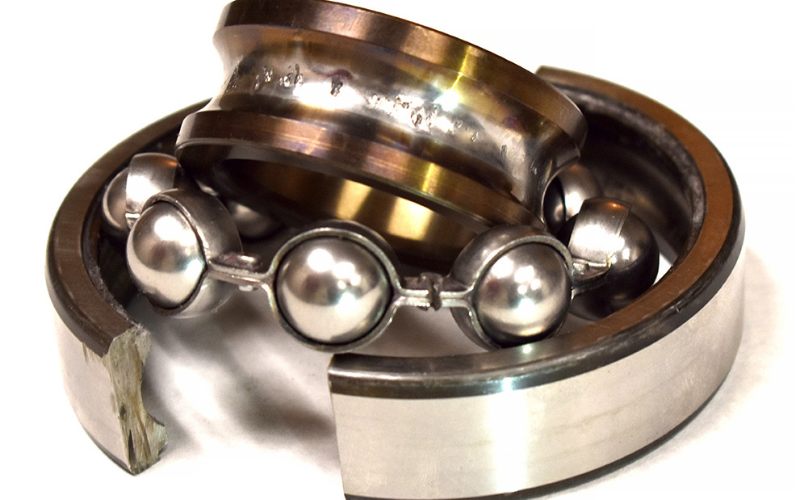Bearing breakdowns is daunting for any establishment, which leads to escalated periods of non-operation, soaring upkeep expenses, unmet shipment deadlines, a dip in earnings, and, at its worst, can threaten employee safety. A single instance of bearing failure doesn’t just disrupt your operations but dents your standing in the business and eats into your profits. Hence, adopting strategies that pre-emptively safeguard the bearings is crucial, enhancing their durability and warding off undue deterioration.
What Makes a Bearing Fail?
 A bearing is deemed to have failed when it falls short of reaching its anticipated duration of service or doesn’t perform up to the projected standards. Despite their pivotal role in handling the brunt of physical weight and operational demands, bearings are frequently the unsung workhorses of the industrial process, often going unnoticed until a malfunction brings them to the fore.
A bearing is deemed to have failed when it falls short of reaching its anticipated duration of service or doesn’t perform up to the projected standards. Despite their pivotal role in handling the brunt of physical weight and operational demands, bearings are frequently the unsung workhorses of the industrial process, often going unnoticed until a malfunction brings them to the fore.
Bearing failures isn’t a rare occurrence. Even with meticulous strategizing and routine maintenance, bearings can still bow out unanticipatedly or ahead of time in their designated roles. Fewer than one in three bearings reach the end of their projected fatigue life, succumbing to ‘wear and tear’ in their operational phase.
Throwing light on the factors which cause bearing failure
Bearings, like any other component, have their breaking points. Here’s a glimpse into the usual suspects behind their malfunctions:
Design Flaws: A bearing’s downfall can sometimes be traced back to its blueprint. If not designed aptly for its intended purpose, it might not withstand the pressures it faces, leading to early wear and eventual failure.
Lubrication Issues: Often, the root of bearing troubles lies in insufficient or incorrect lubrication. Proper lubrication ensures smooth bearing operations and reduces wear. Without it, bearings risk overheating, increased friction, and early deterioration.
Unwanted Intruders: Contaminants like dust or debris can sneak into bearings, harming their surfaces. Such intrusions can accelerate wear, leading to an early exit for the bearing.
Excessive Burden: Bearings have their weight limits. We are pushing them beyond their capacity, whether due to wrong sizing, misuse, or sheer overload, which can hasten their decline.
Off-Center Issues: Misalignment can result in uneven bearing wear shortening lifespan. Proper alignment is pivotal for optimal bearing performance.
Careless Handling & Setup: A bearing’s longevity can only be protected if it’s treated and set up correctly. Damage might not be evident immediately but can manifest over time, causing the bearing to wear out faster.
The Rusty Enemy: Corrosion, resulting from moisture, extreme temperatures, or other environmental elements, can damage the bearing, leading to faster wear.
Weariness Over Time: Bearings have a cycle limit. Push them beyond their endurance through constant vibrations, high rotations, or other stressors, and they’re bound to give in.
Adverse Effects of Bearing Breakdown
The repercussions of a bearing breakdown can ripple through your establishment. This might lead to prolonged inactivity, soaring upkeep expenses, unmet delivery schedules, revenue dips, and, in rare instances, potential harm to staff. Hence, it’s crucial to adopt proactive steps to enhance the durability of your bearings and ward off undue wear.
Steps to Minimize Bearing Wear Guidelines to Avert Bearing Breakdowns
 Lubrication Essentials
Lubrication Essentials
Lubrication stands as the cornerstone for the optimal performance of bearings. The proper lubrication can prolong the bearing’s lifespan, reduce wear, and avert excessive heat. Always opt for the apt lubricant suited for both the bearing and its purpose. Remember, overdoing the lubrication can be as detrimental as skimping on it. Adhering to the maker’s advice on lubrication intervals and quantities is pivotal
Routine Upkeep
Consistent maintenance is the secret to the optimal performance and extended life. Periodic checks can spot potential hitches before they escalate. Adequate upkeep encompasses eyeing lubricant levels and purity, looking for wear indicators, and confirming correct alignment.
Picking the Right Bearing
Selecting the apt bearing tailored to the task is vital for optimal performance and extended life. Aspects like load-bearing capacity, operational speed, and temperature prerequisites should be considered. Collaborating with an informed vendor can guide you to the perfect bearing choice for your needs.
Handling and setting Up with Care
How bearings are handled and set up plays a pivotal role in averting early breakdowns. Make sure paths are kept and moved in environments that are clean, devoid of moisture, and free from vibrations. While setting them up, ensure they’re aligned correctly and apply the right amount of force.
Partner with KG Technologies India for Uninterrupted Bearing Supply

The breakdown of bearings can spell trouble for your establishment, leading to prolonged idle times, skyrocketing upkeep charges, and revenue losses. By grasping the usual culprits behind bearing issues and embracing preventive steps, you can diminish reaching wear and boost their lifespan. Lubrication, consistent upkeep, the right bearing choice, careful handling, and empowering your team stand central to the optimal performance and extended life of bearings. A forward-thinking stance on bearing upkeep can keep expensive breakdowns at bay and guarantee seamless functioning of your operations. Contact us for an uninterrupted bearing supply in India.
Why should businesses align with KG Technologies? The answer lies in our unwavering dedication to quality and customer satisfaction. Our bearings are not just products; they are engineered solutions that offer businesses the peace of mind that comes from knowing they rely on components that won’t just meet but exceed industry standards and expectations. Our production ethos combines cutting-edge technology with profound industry insights.
Also Read – Material Choice in the Bearing Industry Impact Performance
Moreover, KG Technologies believes in fostering strong, collaborative relationships with our partners. Our support doesn’t end after a sale; we provide comprehensive after-sales service to ensure your ongoing operations are seamless and efficient. Partnering with us means investing in a future where your machinery’s performance is optimized, downtime is minimized, and productivity gains drive your business growth. Choose KG Technologies, where excellence is the standard.


